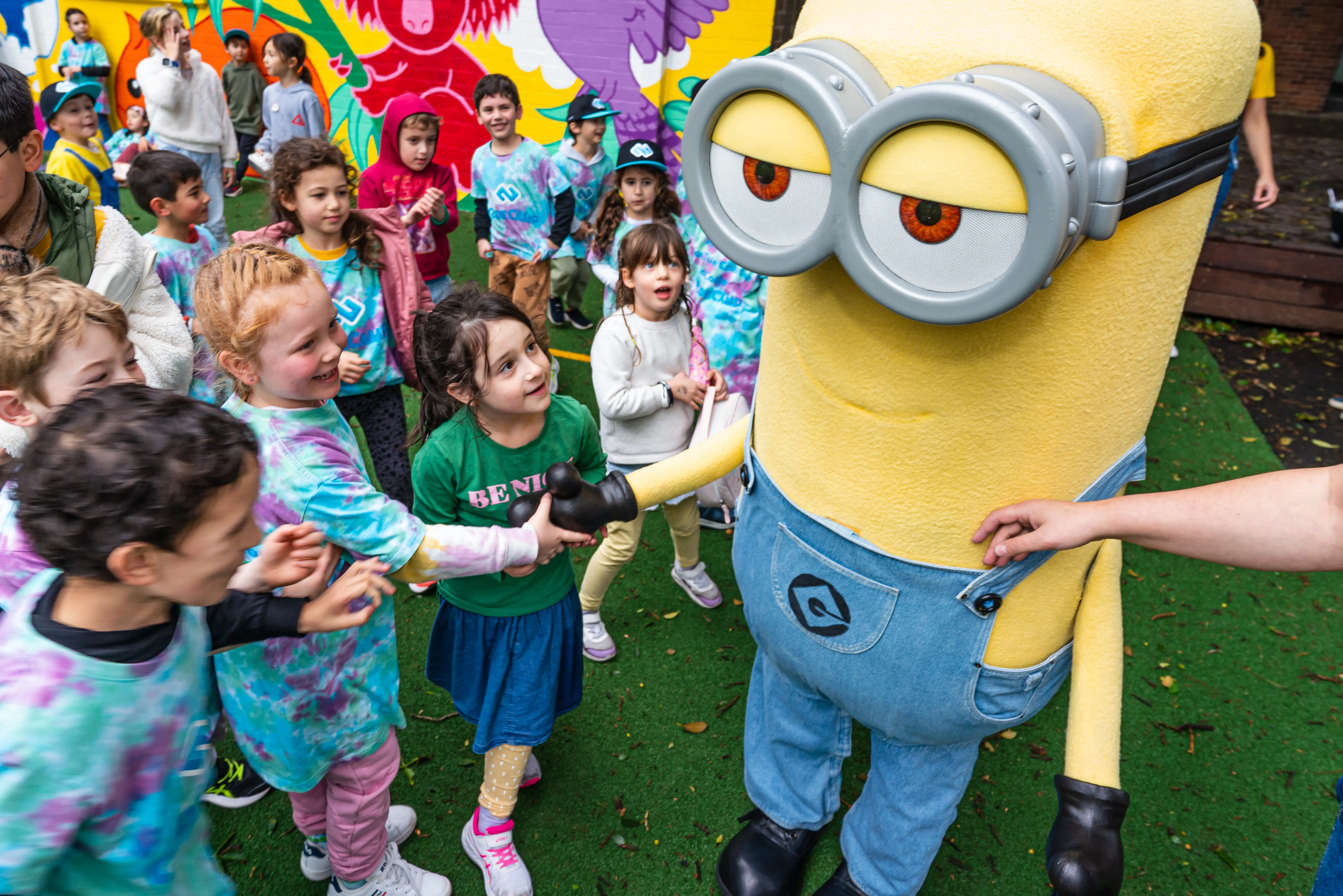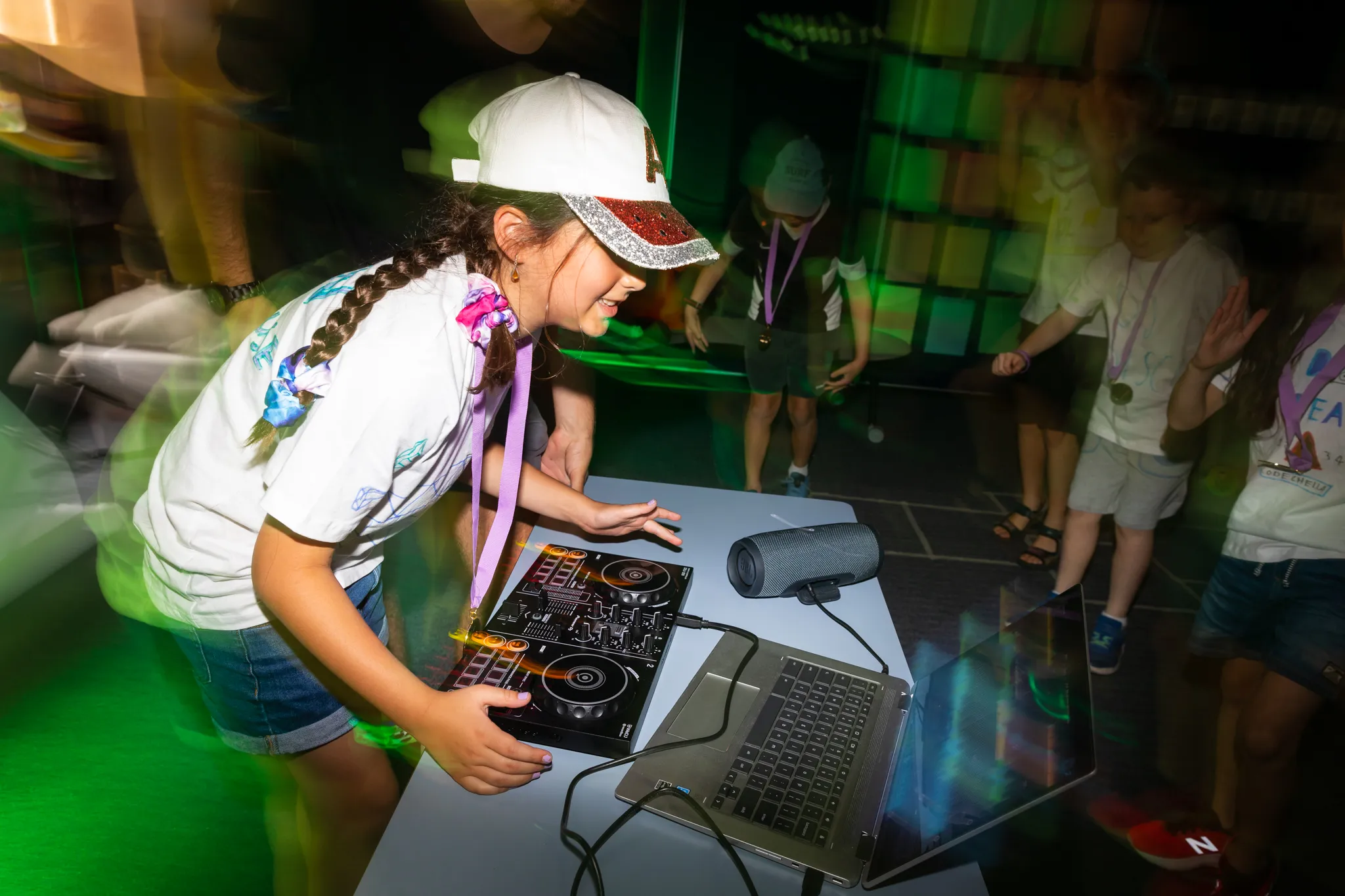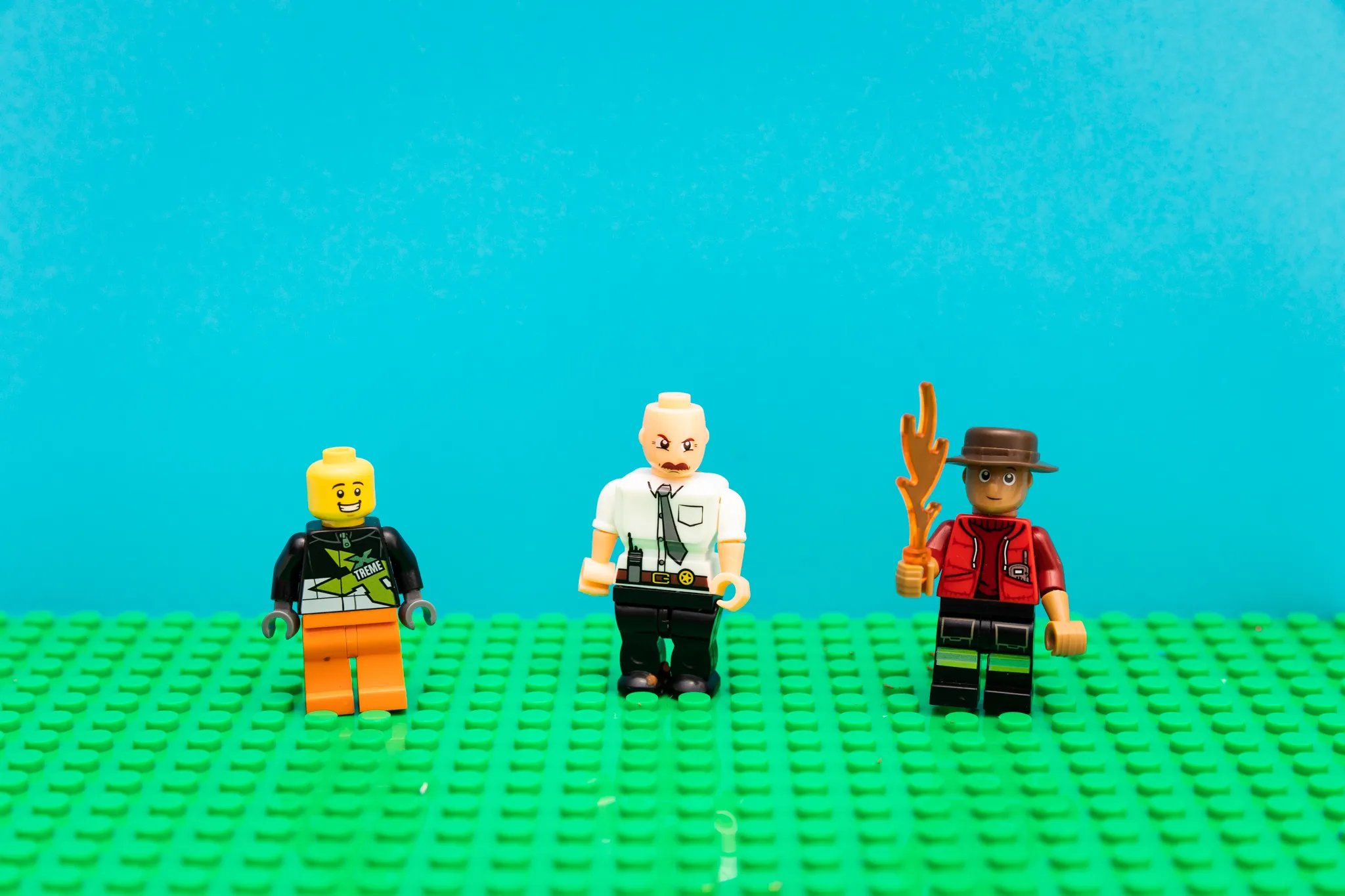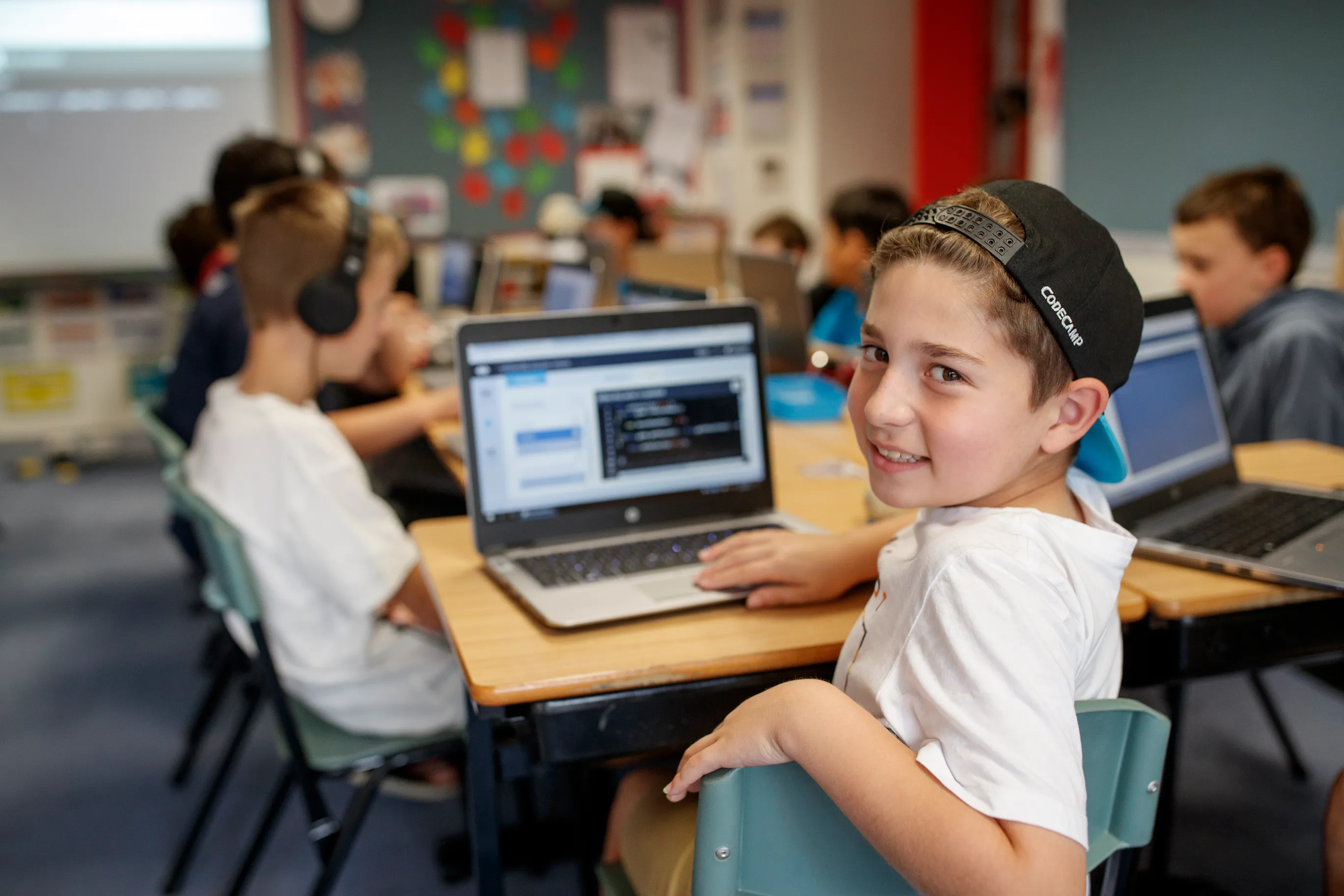
Kids, Sleep and Screens: What Parents Need To Know
This blog post is brought to you by Dr Kristy Goodwin, a children's technology and development expert, author and mum.
Is your child’s screen-time sabotaging their sleep?
Today’s kids are spending more and more time with screens and often before bed. Many of us know that this digital habit can impact both the quality and quantity of their sleep, but we often find this habit hard to change (and for some families it’s simply a matter of needing to do homework on devices before bed). This blog post will inform you about exactly how screens may be sabotaging your child or adolescent’s sleep and will provide you with realistic strategies to minimise the adverse impacts (no, I won’t be suggesting that you ‘digitally amputate’ your child or completely ban screens, so please read on).
If you’re reading this and feeling pangs of guilt because your child uses a screen before bed, don’t worry you’re not alone. Released in June 2017 the Australian Child Health Poll,[1] conducted by the Royal Children’s Hospital Melbourne, revealed that almost half of all children (43%) use digital devices before bedtime and one in four of these children (26%) report having sleep problems. From my experience, speaking to parents, educators and health professionals throughout Australia, I think these are relatively conservative estimates. I think this problem is much bigger than these statistics suggest.
Given that screens can have a really negative impact on our kids’ sleep (and they’re not going to disappear), it’s essential that parents, educators and health professionals teach today’s kids how to use screens appropriately and enforce boundaries around when and where screens can be used.
If we don’t enforce boundaries around where and when they can use screens they have the potential to sabotage kids’ sleep.”
Why is sleep important for our kids?
When I talk about sleep in my Parent Seminars, I often acknowledge that I’m preaching to the converted when I tell parents that kids need sleep. Yep, most of us have endured the dreaded toddler meltdown or the agitated tween, who’s simply tired. Sleep deprivation definitely impacts on kids’ mood and behaviour, that’s a given (and many seasoned parents have experienced the consequences when this doesn’t happen). However, poor sleep habits have also been shown to have adverse impacts on children’s health and development. Insufficient sleep and/or poor quality sleep negatively impacts their alertness, capacity to learn, memory formation, emotional health, concentration, immunity, reaction times, obesity rates and impulse control. Studies have shown that even 30 minutes of missed sleep can result in an IQ difference of ten points[2]!

Are kids getting enough sleep?
Research by Wahlstrom[3] (2014) found that 70% of 14-year-old girls get insufficient sleep, with most of them recording less than eight hours/night (at this age, nine hours/night is the minimum required). Dr. Seton, a sleep expert from Sydney’s Woolcock Institute of Medical Research and Sydney’s Westmead Children’s Hospital suggests that 15% of 14-year-old girls are chronically sleep deprived, with many only accumulating five hours sleep/night. This is alarming as research confirms that even small declines in the amount of sleep kids are having can have a significant impact on their learning (remember, even 30 minutes less sleep/night can reduce a child’s IQ by 10 points!).
Inadequate sleep can also be associated with increasing rates of depression and anxiety and a range of other issues related to kids’ well-being. Put simply, sleep is vital for kids’ health, learning and development.
Kids really need sleep for their overall health and learning, yet we’re facing a sleep deprivation epidemic amongst our kids and teens. “
It’s important to note, it’s not just screens that are to blame for deteriorating sleep habits amongst kids and adolescents. Increasing amounts of homework and a full schedule of extracurricular activities are also culprits for the sleep-deprivation epidemic we’re facing.
A public health epidemic?
As I travel throughout the country speaking to parents, educators and health professionals, I’m hearing more and more anecdotal reports of kids falling asleep in class or constantly reporting feeling tired and depleted. Teachers have reported that more and more children are falling asleep in class (and no, it’s not because the teacher is boring!) and when I speak with health professionals they confirm that they’re also treating children who are often sleep deprived.
Some sleep experts are suggesting that the sleep crisis amongst our kids (both primary and secondary students) is a public health epidemic. Research tells us that 87% of teens sleep with their phone (their ‘digital teddy bear’!) and this is adversely impacting the quality of their sleep as they’re being woken throughout the night to alerts and notifications.
In fact, research shows that children as young as 9 years of age are checking their phones 10 times a night, if they’re present in the bedroom. This means that they’re not completing a sufficient number of sleep cycles each night because their sleep cycles are being interrupted by their phones.
For some kids and adolescents, screens have become their ‘digital teddy bear’ that they take to bed each night!

Why do we need to worry about kids using screens before bedtime?
Why are we seeing a deterioration in kids’ and adolescents’ sleep? They’re not getting enough sleep and/or they’re getting poor quality sleep (woken up multiple times by alerts and notifications on their digital devices). Today’s kids are often using digital devices before they sleep and this can impact on their sleep in two ways: (i) delay the onset of sleep and (ii) hamper the quality of their sleep.
// Sleep delays – tablets and smartphone emit blue light and this can cause sleep delays. Children’s eyes are still developing and haven’t yet developed the protective pigments that enable them to filter out some of the harmful blue light. Blue light suppresses the body’s production of melatonin (the hormone that regulates their sleep-wake cycle) which kids need to produce to fall asleep quickly and easily. Inadequate levels of melatonin can delay the onset of sleep and over time, these sleep delays can accumulate into a significant sleep deficit. So yes, the iPad before bedtime can be the culprit for your child’s inability to fall asleep quickly.
// Premature waking – many parents are reporting that their children are waking at earlier and earlier times to get their daily dose of digital (often before their parents wake up). In parent seminars I share a story of a 3-year-old girl who was waking up each day before her parents and using the iPad. After changing the 6-digit password they were shocked to still find their daughter on the iPad when they meandered downstairs each morning. How did she do it? She’d sneak into her parents’ bedroom and use dad’s thumbprint (he’d sleep with his arms hanging out of the bed) to unlock the device. Scary or genius, I’ll let you decide?
// Interrupted sleep cycles– if children have digital devices in their bedroom, the pings and beeps and alerts and notifications can wake them up and interrupt their sleep cycles. A typical sleep cycle takes approximately 90–110 minutes to complete – four stages of non-rapid eye movement (NREM) and one stage of rapid eye movement (REM). If kids are being woken multiple times each night, they’re not completing a sufficient number of sleep cycles (most kids and teens need between 4 and 6 sleep cycles per night).
// Altered circadian rhythms – Traditionally, the onset of puberty causes changes to adolescents’ sleep habits because of natural biological changes. Their sleep-wake cycles change because of these biological changes. The hormone melatonin is secreted by the pineal gland, but around puberty, melatonin production is delayed until 9-10pm, meaning that adolescents are biologically wired to stay up later (so now you know, they’re telling you the truth when they tell you they’re not tired at 9pm!). However, given that many adolescents are using phones and tablets at night, their melatonin production is even further delayed.
// Night waking– viewing scary or violent content can cause nightmares, particularly amongst younger children under 10 years of age (they’re susceptible to experiencing intense fear as a result of viewing disturbing footage or images because they’re psychologically unable to distinguish fiction from reality until between 8-10 years, typically). Whilst many parents wisely restrict their kids’ exposure to violent movies and/or video games, sometimes we overlook the scary or disturbing images or video that are featured on TV news programs and distributed via social media. Movie trailers and promotions are another source of content than can be distressing for kids to consume.

Simple strategies to reduce the impact of screens on kids’ sleep
// Digital bedtime– in an ideal world, kids wouldn’t use digital devices in the 90 minutes before they go to sleep. Research has shown that kids’ brains and eyes need a break from screens at least 90 minutes before bedtime (even 60 minutes has been shown to improve sleep). Psychologist Jocelyn Brewer calls it a “digital sunset” and it’s a concrete reminder that kids need to switch off from their devices.
// Blue-light glasses- given that many of our kids are now spending time before sleep doing homework on digital devices, sometimes the digital bedtime I mentioned above is totally unrealistic. I understand that co-curricular or sports training can delay the start of homework so kids are often using devices close to bedtime. So Baxter Blue developed a great solution- non-prescription glasses that absorb blue-light. I’ve been using these glasses for 6 weeks now and I can say they’ve helped my sleep (I’ll admit, sometimes I don’t walk my talk and I’m on my phone or laptop before I go to sleep).
// Bedrooms as tech-free zones- we need to keep devices out of bedrooms. Simple. Not only does the presence of technology in the bedroom impact on the quality and quantity of sleep kids get, but there are serious issues related to cyber-safety when kids have access to technology at night. (In my parent seminars I often share a story of an 8-year old boy who was waking up to do homework and access pornography at 1am!) When your child tells you their phone is their alarm clock, go and buy them a traditional alarm clock instead.
// Have a landing zone- nominate a specific area in your house where the six tablets, five laptops, and eight smartphones go to charge each night. That way you can do a quick headcount before bed to check that no devices have been smuggled into bedrooms. Bonus tip- check you child’s charging the device and not just an empty case.
// Do a technology-swap- I’m a Mum so I’m not going to propose absolutely no screens before bed. Just think carefully about what they’re doing on screens before bed. Avoid rapid-fire, fast-paced screen action, as it hyper-stimulates the brain. Doing a swap can also work well. Watching TV and notthe iPad before bed is a better choice as TVs don’t tend to emit as much blue light as mobile devices and kids don’t (usually) sit as close to TVs as they handheld devices. Listening to music or an audiobook instead of watching a screen may also be a better choice.
References:
Your Ultimate school holidays activity list

1. Get creative with Minions
What is it?
Kids go bananas for Minions (pun intended) and these school holidays they can express their fandom making a Minions movie using stop-motion animation techniques. Over 2 days, kids create their own Minions clay characters and design their own film set. The magic begins when they see their characters come to life by taking multiple images of objects and stitching them together to look like they’re moving! - It’s incredibly fun!
Why go?
If they watch their favourite animated movies on repeat, they’ll love creating Minions clay figurines and developing their own story, taking lots of still frames and stitching them together to create their very first movie!
Ages: 5-7

2. Become a DJ
What is it?
Children will take their first steps into the exciting world of mixing music to create their own DJ set.
Why go?
Kids will love mixing their favourite pop tunes using beat matching and transitions on real DJ decks. Plus, they will design their own DJ brand, develop branded merch, and even perform a DJ set to their friends!
Ages: 8-13

3. Pilot a drone
What is it?
Kids learn to pilot a drone using coding to design a flight path and watch in wonder as the drone takes flight!
Why go?
If your kid shows an interest in drones, they can learn more than just the basics of flying. Kids get a taste of cutting-edge technology and learn about coding, problem-solving, engineering, design, and more. They’ll learn about drone tech and safety, movie making, and discover how drones have a positive social impact when used to fight bushfires, rescue koalas, spot sharks on the coast and loads more!
Ages: 9-13

4. Become a YouTuber
What is it?
While they may not end up with YouTube stardom, we’re sure kids will have a new lens on screen time. They will be equipped with the skills to start producing and directing their own ideas instead of simply watching other people's! Plus, they’ll gain confidence ‘performing’ in front of audiences and on set and importantly, learn about staying safe online.
Why go?
Taking a YouTube fixation and turning it into something incredibly productive where kids will learn planning, storytelling, filming and video editing to become the star in their very own YouTube-style videos.
Ages: 8-13

5. Produce a LEGO movie
What is it?
Turn hours of playing with LEGO characters into an even more creative pursuit, by teaching kids to create their own LEGO Movie.
Why go?
They can use their favourite LEGO characters and sets, come up with a fun storyline and use stop-motion techniques to produce a short animation film. It will transform the way they play at home and offer endless hours of creativity for the rest of the holidays.
Ages: 7-12

6. Code a game
What is it?
Kids can design their own arcade-style video games (like Super Mario Bros), jam-packed with cool characters like zombies and unicorns, and awesome gaming features such as invisibility cloaks and shrinking potions. They’ll learn drag and drop code and logic to connect all the design elements together and bring their games to life!
Why go?
Kids are spending countless hours on Roblox and Minecraft these days. Get them to spark their creative side instead, by producing their own original games, using a combination of creative level design, storytelling and problem-solving to bring their creations to life. It’s so much fun, they won’t realise they are actually learning some very important coding and tech skills for their future.
Ages: 7-12

7. Develop a Website
What is it?
For kids with some proficiency in coding, they’ll create their own website from scratch about an animal, movie, sporting team or their favourite topic.
Why go?
With 1.93 billion websites on the world wide web, developers are in higher demand than ever before. It’s a great head start to gain fundamental web building skills and your kids will have so much fun in the process.

